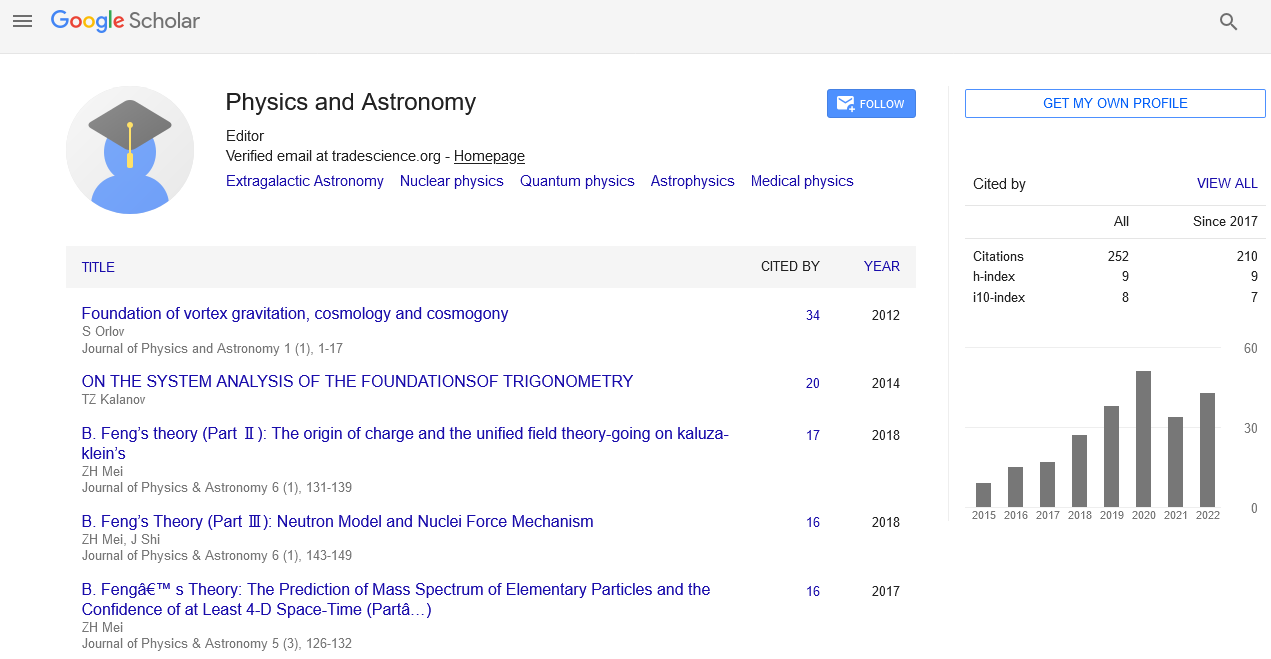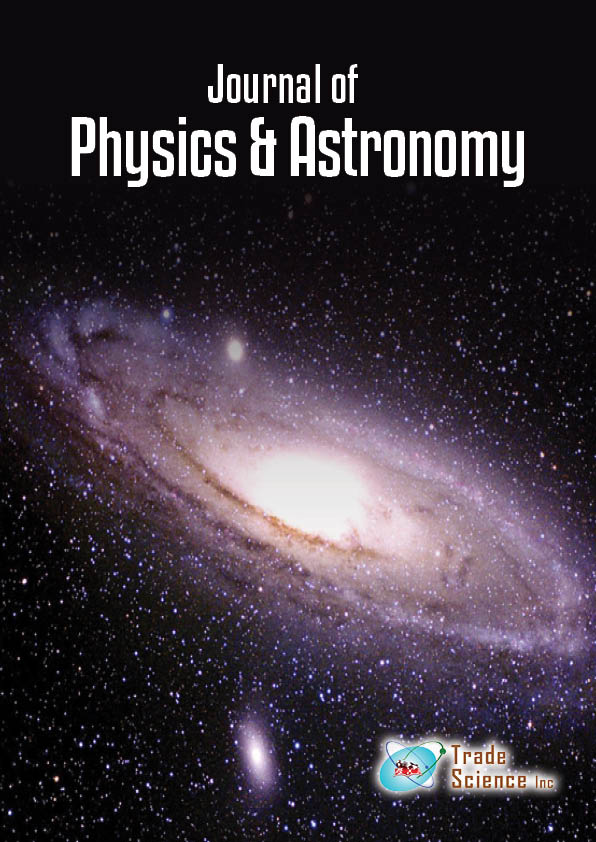Image Article
, Volume: 12( 11)Electron Orbitals are not Probability Clouds: They are Holographic Planes
- *Correspondence:
- Bhushan Poojary
Department of Physics, NIIMS University, Jaipur, India
E-mail: bhushanpoojary@gmail.com
Received date: Nov-03-2024, Manuscript No. tspa-24-154157; Editor assigned: Nov-06-2024, Pre-QC No. tspa-24-154157(PQ); Reviewed: Nov- 09-2024, QC No. tspa-24-154157(Q); Revised: Nov-14-2024, Manuscript No. tspa-24-154157(R); Published: Nov-26-2024, DOI. 10.37532/2320- 6756.2024.12(11).344
Citation: Poojary B. Electron Orbitals are not Probability Clouds: They are Holographic Planes. J Phys Astron. 2024;12(11):344.
Abstract
The conventional interpretation of electron orbitals as probability clouds has been central to quantum mechanics. However, this paper proposes a novel framework in which electron orbitals are holographic planes defined by the fine-structure constant and relativistic principles. This holographic interpretation provides a deterministic yet flexible description of quantum behaviour, linking the electron's unique spacetime geometry to its interaction with the electromagnetic field. The model explains quantized energy levels, spectral line structures, and interference phenomena while aligning with relativity. The implications for quantum mechanics and the unification of physics are profound, offering testable predictions.
Keywords
Electron orbitals; Probability clouds; Quantum mechanics; Holographic planes; Relativistic principles
Introduction
Electron orbitals are traditionally viewed as spatial probability distributions derived from the Schrödinger equation. These "clouds" represent regions where the electron is likely to be found [1]. While successful in explaining atomic spectra and chemical bonding, this probabilistic interpretation lacks a deeper connection to spacetime geometry and fundamental constants.
This paper challenges the conventional view, proposing that electron orbitals are holographic planes—two-dimensional projections encoding three-dimensional quantum information. This perspective leverages the fine-structure constant (α) and relativistic principles to redefine the electron’s behaviour in a hydrogen atom.
Theoretical Framework
Fine-structure constant and electron dynamics
The fine-structure constant  governs the strength of electromagnetic interactions [2]. In this model, α defines the scaling of the electron's holographic plane. The plane moves at a velocity proportional to αc, reflecting the electron’s relativistic relationship to the nucleus.
governs the strength of electromagnetic interactions [2]. In this model, α defines the scaling of the electron's holographic plane. The plane moves at a velocity proportional to αc, reflecting the electron’s relativistic relationship to the nucleus.
Holographic planes in quantum mechanics
Holography provides a framework for encoding information about the electron’s position, momentum, and energy in a twodimensional structure [3]. The holographic plane represents the interference patterns arising from the electron’s interaction with its own localized spacetime geometry and the external electromagnetic field.
Relativistic spacetime and the electron
The electron's holographic plane is not static but moves relative to the nucleus. This motion introduces relativistic effects, including time dilation and length contraction, which influence the stability and behaviour of the orbital [4].
Results
Energy levels and spectral lines
Quantized energy levels in hydrogen are interpreted as resonances within the holographic plane. The transitions between levels correspond to shifts in the plane's interference patterns, governed by α and the electron's relativistic speed.
Wave function interpretation
The wavefunction, ψ, encodes the density and phase of the holographic plane. The real and imaginary components represent the plane's interference structure before and after wavefunction collapse [5].
Experimental Predictions
Interference patterns: Advanced imaging of electron orbitals may reveal deviations from standard probability clouds, supporting the holographic model.
Spectral line shifts: Variations in α or external fields could induce measurable shifts in spectral lines.
Photon phase changes: Transitions in the holographic plane should manifest as specific phase changes in emitted photons.
Discussion
The holographic plane model offers several advantages over the traditional probability cloud framework. By embedding the electron’s behavior in a spacetime geometry defined by α, it bridges quantum mechanics and relativity. This model aligns with the holographic principle in physics, which posits that higher-dimensional information can be encoded on a lower-dimensional surface [6].
Furthermore, the model provides a deterministic interpretation of quantum mechanics without invoking hidden variables or retrocausality. It also aligns with experimental observations, such as double-slit interference and spectral line quantization.
Conclusion
This paper proposes that electron orbitals are not probability clouds but holographic planes, defined by relativistic principles and the fine-structure constant. This reinterpretation provides a robust framework for understanding atomic and quantum phenomena, offering testable predictions and a potential pathway toward unifying quantum mechanics with relativity.
Future work will focus on refining the mathematical model, exploring connections to entanglement, and conducting experiments to validate the holographic nature of electron orbitals.
References
- Griffiths DJ, Schroeter DF. Introduction to quantum mechanics. Camb univ press. 2019.
- Dirac PA. The quantum theory of the electron. Proceedings of the Royal Society of London. Contain. Pap. Math. Phys. Character 1928;117(778):610-24.
- Poojary BB. Emergent Universe from Many Unreal World Interpretation. Theor. Phys. 2020;6(3):14-8.
- Einstein A. The general theory of relativity. InThe mean. relativ.1922. Dordrecht: Springer Netherlands.
- Poojary B. Electron Orbitals Are Not Probability Clouds: They Are Holographic Planes.
- Bousso R. The holographic principle. Rev Mod Phys.2002;74(3):825.

